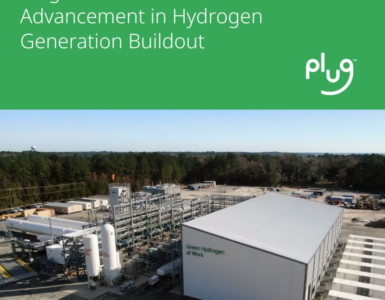How the TransHyDE lead project aims to develop a hydrogen transport infrastructure.
Without a suitable transport infrastructure, the hydrogen economy cannot function. Especially for imports, solutions other than gas pipelines are needed. There are many ideas for this – but it is unclear which solution is suitable for which application and how they are best combined.
The flagship project TransHyDE is therefore developing, evaluating and demonstrating several technologies for hydrogen transport.
In order to advance Germany on the way to climate neutrality, several hundred million tons of hydrogen are needed annually. Germany will produce part of it itself – the much larger part will have to be imported from windy and sunny regions. In both cases, functioning and efficient transport infrastructures are needed. Hydrogen is rarely used where it is produced.
🔥 What about we co-host a webinar? Let's educate, captivate, and convert the hydrogen economy!
Hydrogen Central is the global go-to online magazine for the hydrogen economy, we can help you host impactful webinars that become a global reference on your topic and are an evergreen source of leads. Click here to request more details
Therefore, transport infrastructures for short, medium and long distances are urgently needed. In some cases, existing gas network and gas storage infrastructures could be used for this purpose, and in some cases completely new transport technologies are needed. In both cases, there is still a massive need for research.
For example, there is currently still a lack of suitable standards, safety regulations and international regulations. In addition, numerous transport technologies have so far only been tested on a small scale.
The transHyDE flagship project will therefore comprehensively further develop transport technologies – in a technology-open manner along various possible development paths. More precisely, TransHyDE will test and scale up a transport technology in four demonstration projects:
- Hydrogen transport in high-pressure vessels.
- Hydrogen-liquid transport.
- Hydrogen transport in existing and new gas pipelines.
- Transport of hydrogen bound in ammonia.
To ensure that all these technologies become part of the overall energy system as quickly as possible, the lead project wants to initiate its own roadmap process. In this way, the project wants to continuously analyze: Where do we stand, where do we want to go – and how exactly can we achieve this goal?
It is already clear that new standards, new standards and new certifications are needed to enter the market for hydrogen transport technologies. Therefore, the project dedicates its own work package to this topic. The same applies to material testing, sensor technology and safety. This ensures that all developed solutions will be durable, efficient and safe.
How the transHyDE flagship project aims to develop a hydrogen transport infrastructure, August 20, 2021








